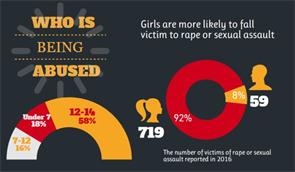US and DPRK still insist on playing the power game
By Cai Hong (China Daily) Updated: 2017-08-28 07:06As relations between the United States and the Democratic People's Republic of Korea further deteriorate, some East Asian countries are busy strengthening their militaries. At the United Nations forum on disarmament in Geneva on Tuesday, the US and the DPRK accused each other of posing a nuclear threat. US envoy Robert Wood elaborated on President Donald Trump's top priority: protect the US and its allies against the "growing threat" from the DPRK, for which Washington will use "the full range of capabilities at our disposal".
DPRK diplomat Ju Yong Chol, on his part, said, "as long as the US hostile policy and nuclear threat remains unchallenged, the DPRK will never place its self-defensive nuclear deterrence on the negotiating table or step back an inch from the path it has taken to bolster the national nuclear force". More importantly, DPRK leader Kim Jongun has reportedly instructed the country's Chemical Material Institute of the Academy of Defense Science to make more solid-fuel rocket engines and rocket warheads.
The US and the Republic of Korea, refusing to change their stance, began this year's 11-day joint military drill on Aug 21, to which the DPRK responded with a warning that the US could face "merciless revenge". And when Japanese and US foreign and defense heads met in Washington on Aug 17, Tokyo unveiled a plan to accelerate the deployment of a land-based Aegis Ashore anti-missile defense system to counter Pyongyang's military "provocations". Japan already uses a sea-based Aegis Ashore system, a regular feature on many US warships.
An Asahi Shimbun report said the Japanese defense ministry has decided to develop an anti-stealth radar system that can locate ballistic missiles with stealth capabilities. Work on the next-generation warning and control system will begin in the next fiscal with an expected budget of 19.6 billion yen ($177 million), and the ministry plans to complete it by fiscal 2023.
Besides, Japan is likely to increase its defense budget at a faster pace in its next five-year plan, which starts in April 2019, than the 0.8 percent annual average increase, according to the Nikkei Shimbun.
The ROK, too, is strengthening its military. After the DPRK test-fired its second intercontinental ballistic missile on July 28, ROK President Moon Jae-in ordered the speedy deployment of the controversial US Terminal High Altitude Area Defense anti-missile system, reversing his earlier decision to suspend it for environmental reviews.
And the US Department of Defense has said it is "actively" considering revising the bilateral ballistic missile guidelines with the ROK to accede to the latter's request to build more powerful missiles. The ROK has also deployed the US-built Patriot missile defense system and, apart from the two THAAD launchers already deployed, has four more in the pipeline, pending an environmental review.
Moreover, Moon told Trump during their telephone conversation on Aug 7 that Seoul wants to build a nuclear-powered submarine.
The US continues to raise tensions in the region even though the DPRK and the ROK are technically still at war, as the Korean War (1950-53) ended with an armistice agreement, not a peace treaty. In May, the Pentagon endorsed a plan, the Asia Pacific Stability Initiative, to invest $7.5 billion to strengthen US military presence in the Asia-Pacific region over the next five years. The plan, if approved, would translate into an extra annual spending of $1.5 billion for the region from 2018 to 2022.
The initiative "could enhance US military power through targeted funding to realign our force posture in the region, improve operationally relevant infrastructure, fund additional exercises, pre-position equipment and build capacity with our allies and partners", said US Senator John McCain, who proposed the initiative earlier this year as a long-term plan to counterbalance China's growing capabilities. The plan has gained increasing support among US lawmakers amid the intensifying concerns over the DPRK.
It's a pity that the parties refuse to realize that the ongoing game of military buildup will worsen the security situation in the region, instead of defusing tensions.
The author is China Daily Tokyo bureau chief. caihong@chinadaily.com.cn












